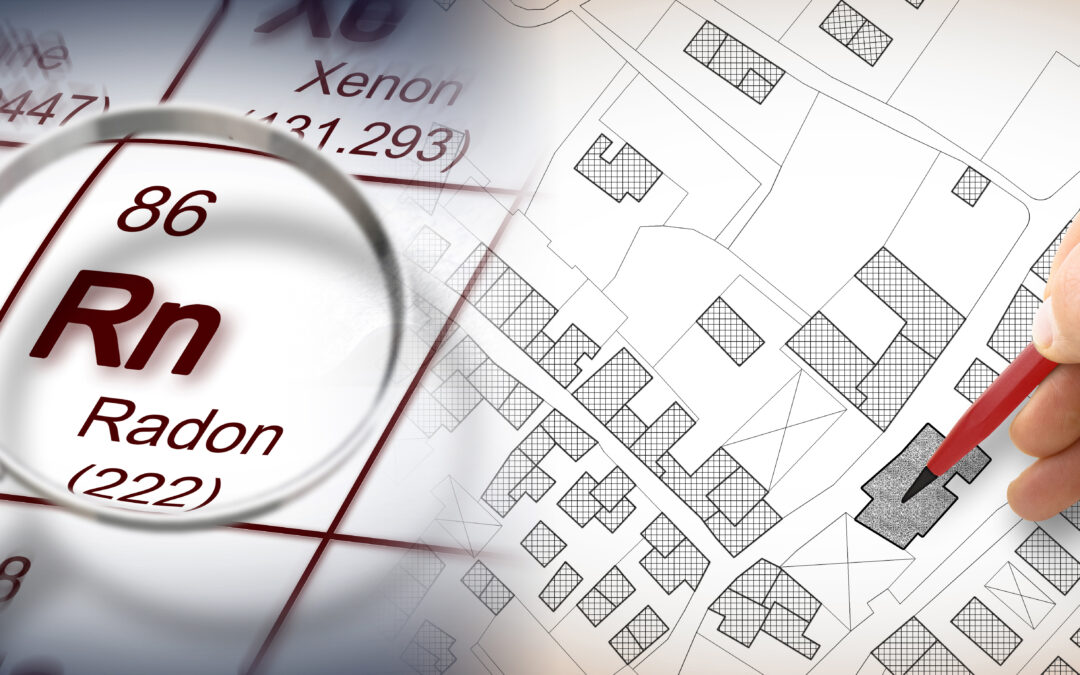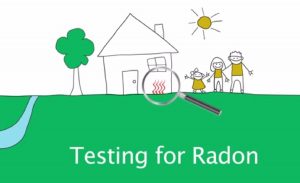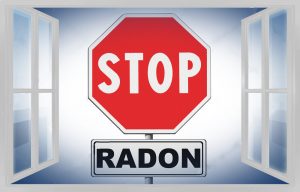At present, radon poisoning has no known cure or treatment. In the event of radon poisoning, it is imperative that you limit your exposure to radon to the greatest extent possible.
To prevent further lung damage and other symptoms from worsening, it is important to avoid smoking. Moreover, a radon test should be performed on any potential radon sources, especially in your own home.
In the event that your home’s radon levels are found to be high, you must take immediate action to reduce them. As a result, you’ll lower your risk of developing lung cancer.
We’ll discuss radon and what to do if you suspect you have radon poisoning in the article below.
What Is Radon & How Do You Come In Contact With It?
Radon is a radioactive gas that occurs naturally. Radioactive metals such as thorium or radium in the ground break down in the surrounding rocks and water, resulting in this byproduct. When the gas rises out of the ground, it can accumulate inside buildings.
Radon gas will accumulate around your property unless you take steps to mitigate it. The HVAC or ventilation systems installed can be used to disperse it throughout the building. Because it is 7.5 times denser than air, radon is typically found in the home’s lower levels.
Even in the open air, radon can be found. As a result, it isn’t nearly as dangerous outside. Instead, if you’re a frequent visitor to buildings, you’re at risk of being exposed to dangerous levels of radon. If you’re at home, at work, or at school, this could be the location.
One in every fifteen homes in the United States has high radon gas levels, according to the EPA. It is estimated that over 70,000 students in the United States are being exposed to toxic levels of the gas in classrooms and other public places.
Is Radon Poisoning Curable?
The dangers of radon gas are unknown to many individuals. As a result, there are presumably a large number of homes with high radon concentrations that no one knows about. Radioactive particles collect on your lungs’ walls as you continue to breathe in the gas. Studies have shown that radon decay (which produces radiation) damages cells in the immediate vicinity for roughly three to four hours.
This isn’t a major deal in tiny dosages, as the cells are simply replaced. Because of this, exposure can cause long-term health problems if it isn’t stopped. Lung cancer is more likely as a result of this.
Lung cancer’s early symptoms appear the minute you become aware that something is wrong with your health. These are some examples:
- Pneumonia
- Wheezing
- Incessant coughing
- A bloody cough
- Pain in the chest
- A feeling of breathlessness
Radon is the second most common cause of lung cancer in the United States, according to the American Cancer Society. Lung cancer is most commonly caused by smoking. It is far more difficult for persons who have radon-related lung cancer to recover if they also smoke.
There is no known cure for this type of cancer, as there is for the majority of cancers. In the 1980s, a study of mineworkers led to the following conclusion.
The influence of exposures in the distant past diminishes by 62% per decade. At the same time, the extra relative risk decreases by 43% per decade in relation to the age at which exposure occurs.
However, this study does demonstrate that the risk of lung cancer decreases over time, even though it is not definitive.
What Should You Do If You Start Experiencing Radon Poisoning Symptoms?
At this time, there are no tests available to determine your level of exposure to radon. As a result, you must be aware of the warning signs of lung cancer before it’s too late.
If detected early enough, this cancer, like the majority of others, may be curable. If you experience any symptoms of lung cancer, you should seek medical attention right once and get your home tested for radon as well. Other than reducing radon levels in your home and hoping to be treated as early as possible, there is little else you can do.
Conduct A Radon Gas Test In Your House To Be Safe
Testing your home for high levels of radon gas is the greatest way to ensure that you do not become ill from it. No matter how low your neighbor’s radon levels were, you should still have your house tested.
The only way to be sure that you don’t have elevated radon levels is to get a radon test done. Radon test kits are available for purchase and can be used to conduct your own tests in the comfort of your own home. Still, it’s a good idea to have a mitigation business test it for you.
Moreover, it is necessary to minimize radon levels in your house if they are more than four picocuries per liter, as determined by a radon test. Want to get your home radon levels tested? Give us a call today!




